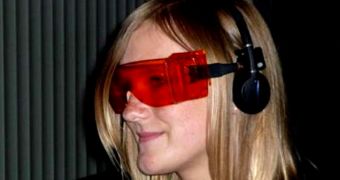There is no doubt that teenagers today are exposed to many more things keeping them awake than people growing up in the 1990s or before were. Text messages, online chat rooms, streaming video online and other such activities make youngsters of today go to sleep later in the night, sleep less, and generally be more tired the next day. Now, a study finds an additional influence on these sleeping habits. Researchers say that fewer teens today are exposed to the effects of blue light, also called morning light, which is known to play a part in getting the body and the mind to wake up.
“As teenagers spend more time indoors, they miss out on essential morning light needed to stimulate the body's 24-hour biological system, which regulates the sleep/wake cycle. These morning-light-deprived teenagers are going to bed later, getting less sleep and possibly under-performing on standardized tests. We are starting to call this the teenage night owl syndrome,” explains Rensselaer Polytechnic Institute (RPI) expert Mariana Figueiro, who was also a researcher on the new study. The investigation was conducted on 11 children, all in the 8th grade, who were asked to wear special glasses, that blocked out blue light, for about five days.
Even with the extremely short study period, the investigators noticed that the study participants tended to go to bed up to half an hour later than they usually would have. Therefore, the experts managed to create a direct correlation between this type of light and a disruption in regular sleep patterns. Experts explain that one of the main reasons why this happens in today's teens is the fact that most children get up and go to school before the Sun rises, or as it rises. If this is the case, then the children are already in classes that have poor natural illumination when the morning sunlight is at its peak, LiveScience reports.
In addition to influencing sleep patterns, this type of light also tells the human body it's time to start mechanisms that tune body temperature, alertness, appetite, and hormones, to name but a few. “Delivering daylight in schools may be a simple, non-pharmacological treatment for students to help them increase sleep duration,” explains Figueiro. Details of the new investigation appear in the latest issue of the respected scientific journal Neuroendocrinology Letters.

 14 DAY TRIAL //
14 DAY TRIAL //